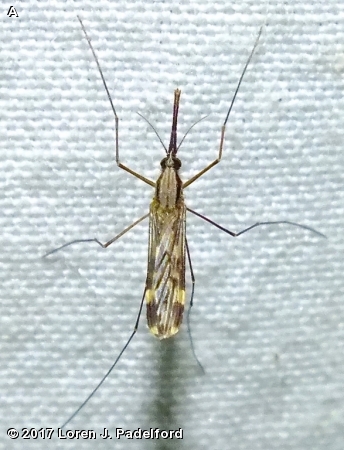
A mid-sized mosquito with distinctively marked wings. A good look at the wing pattern is sufficient to identify this species of mosquito. Very distinctive wings with predominantly dark scales and cream colored scales in the costal and subcostal areas. Larvae are somewhat distinctive in appearance. They are almost always found on the surface of the water. They do not have breathing tubes so must remain on the surface to obtain oxygen. The larvae are elongate with many hairs, some plume-like, that help to keep them on the surface.
This mosquito is found throughout North America. It is common in eastern Nebraska. Adults are most abundant in early spring and late fall. Larvae are present in temporary pools, ponds and quiet areas of flowing water from May to September.
This mosquito is a known vector of endemic malaria parasites in North American white-tailed deer. Adult females overwinter in abandoned buildings, cellars, caves, hollow trees, and similar habitats. Eggs are laid directly on the water surface. Each egg has a set of flotation sacks to prevent it from sinking. There are 14 species in the genus Anopheles. Mosquitos in this genus are the only ones known to carry the malaria parasite.
Disclaimer: The content of NatureSearch is provided by dedicated volunteer Naturalists of Fontenelle Forest who strive to provide the most accurate information available. Contributors of the images retain their copyrights. The point of contact for this page is: Loren Padelford.


